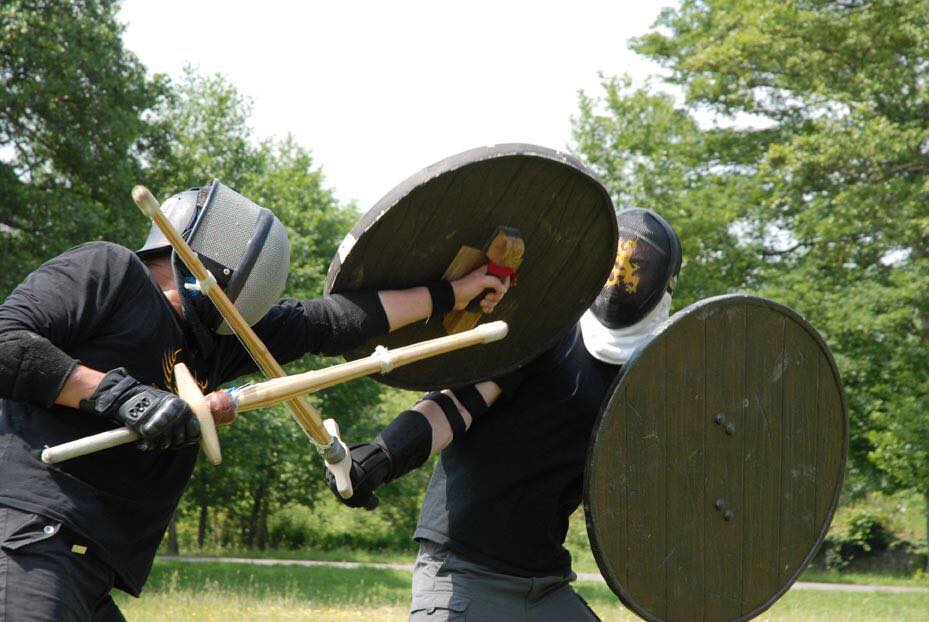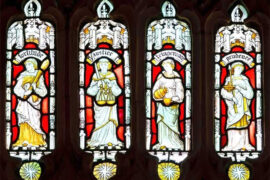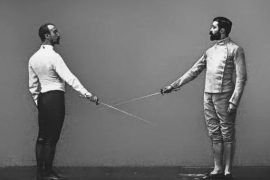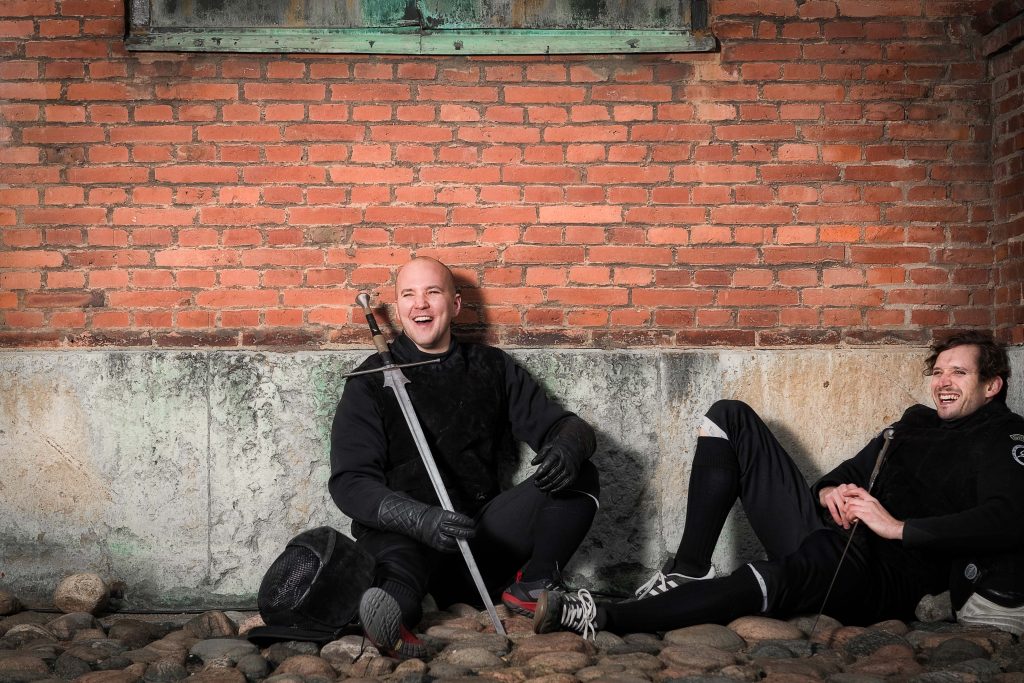One of the world’s foremost artists throughout history, was also a man who lived by the sword and who constantly got into trouble. He fought, drank and even killed in between sessions of creative passion. New evidence suggests that Caravaggio may have died from an infection sustained during a sword fight in a tavern in Naples, in 1610.

He is best known for laying the foundation for baroque painting. A divine talent who in spectacularly beautiful paintings captured the human physical, emotional and spiritual state in small sets and dramatic use of light and darkness. His painting Cardsharps is a drama where the naïve meets earthly sins and deceit. His depiction of the biblical tale of Judith and Holofernes shows in gruesome detail blood spurting from the neck of Holofernes as he is being decapitated while waking up from his drunken delirium. It may not be surprising then, that Caravaggio was a man who was familiar with sin first hand.
Constantly in trouble with the law
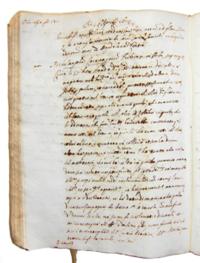
Caravaggio’s life was that of a ruffian, a street brawler, a man who never backed down from a fight. In his childhood he lost almost his entire family to the plague, and he would later find companionship with Rome’s bad boys who were constantly fighting vendettas and getting themselves into trouble. Caravaggio himself was regularly on the run, or in prison, for one offence or the other.
Floris Claes can Dijk knew him and had this to say:”after a fortnight’s work he will swagger about for a month or two with a sword at his side and a servant following him, from one ball-court to the next, ever ready to engage in a fight or an argument, so that it is most awkward to get along with him.”[1]
His criminal behavior resulted in a long list of offences that are still available[2]. In one account from 1606, he was caught carrying a sword and dagger by a city guard. The guard asked him if he had a permit, to which he simply replied “no”, and was arrested. That wasn’t the first time he was arrested for that offence (the first illegal carrying of weapons was in 1598), but by that time it’s pretty certain the police knew exactly who he was, since he had committed quite a few crimes, including throwing rocks at the police. He had also been arrested for assault on a young Tuscan art student named Girolamo Spampa, who he attacked from behind. In one instance he slashed a courtesan in the face with a knife, a way to mark her for an insult. Other crimes which resulted in dealings with the law included insulting and attacking a man with a sword and striking a Vatican notary from behind with a weapon.
Assaulted over an artichoke
In one of the most famous altercations, Caravaggio assaulted a waiter over an artichoke. Or possibly poor service. The actual victim’s report is preserved and reads:
“About 17 o’clock the accused, together with two other people, was eating in the Moor’s restaurant at La Maddalena, where I work as a waiter. I brought them eight cooked artichokes, four cooked in butter and four fried in oil. The accused asked me which were cooked in butter and which fried in oil, and I told him to smell them, which would easily enable him to tell the difference.
He got angry and without saying anything more, grabbed an earthenware dish and hit me on the cheek at the level of my moustache, injuring me slightly… and then he got up and grabbed his friend’s sword which was lying on the table, intending perhaps to strike me with it, but I got up and came here to the police station to make a formal complaint…”[3]
The duel in the tennis court

The brutal painting showing Judith and Holofernes features a woman that would have a great impact on Caravaggio. She was a prostitute named Fillide Melandroni. The theme of the Jewish Judith who kills the Assyrian king with his own sword has been shifted to a Roman brothel, according to some modern chroniclers at least. This type of lude interpretation of biblical motifs would often make him a hard pill to swallow for his ecclesial commissioners, who on several occasions immediately sold his paintings to private collectors, something that according to his friend Giulio Mancini, may have been hard on Caravaggio.
For him, this was the very point of his art. He was steeped in the world of men, not saints, and from that vantage point he saw the biblical tales. Mother Mary became an ordinary Roman mother, with a dress cut too low, and with a face marked by life—not deified by heavenly glory, but by her connection to women Caravaggio knew.
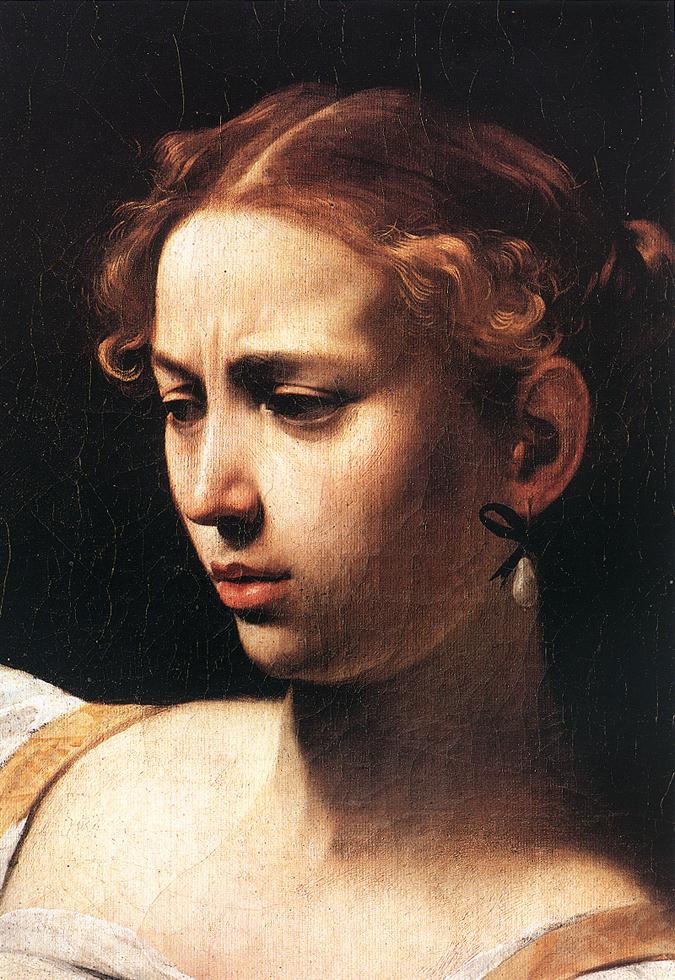
Fillide was just such a woman, and Caravaggio’s favourite model. Not surprisingly, Caravaggio had intimate relations with her, and for one reason or the other, he got in trouble with her pimp, a man called Ranuccio Tomassoni. The exact details of how things got out of hand are clouded by history, but there are many theories. The police report mentions a gambling debt, but that may just have been an excuse. In any case, Caravaggio was not alone, he had three companions with him that day, one of which was a Captain in the Papal army. They met with Tomassoni’s gang for a pre-arranged duel at a pallacorda (a type of tennis) court and there Caravaggio killed Tomassoni with a thrust to the femoral artery. Injuries at the time meant something, and one theory is that Caravaggio was deliberately trying to hit the man’s pelvis to castrate him, which carried meaning that the grievance was connected to sex in some way, reminiscent of the story of Abélard and Héloïse.
This was the last drop for the authorities and Caravaggio was sentenced to death in absentia. He fled Rome to Malta, where he joined the Knights of St John. Of course, true to his nature, he soon got into a fight and injured a man called Fra Giovanni Rodomonte Roero, one of the most high-ranking members of the order, and he had to flee once more.
A bar fight in Naples

He travelled to Naples where he was just about to be pardoned for the Tomassoni’s death, when he was attacked by a group of men in a tavern, presumably they were led by Rodomonte Roero, the man he had injured in Malta. Caravaggio received a deep cut to the face.
It is now believed that it was this wound that killed him. In a recent article in The Lancet, scientists tell of how they have been able to locate Caravaggio’s remains in a cemetery in Porto Ercole. By analyzing his molars, they could conclude that he died of sepsis, or blood infection, which matches the timing of the tavern brawl and the onset of the symptoms. Part of his aggressiveness can perhaps also be explained by another conclusion from the analysis; Caravaggio suffered from high levels lead poison. Lead poisoning is known to cause learning disabilities, aggression, ADHD and problems with impulse control, which has been noted as a wider explanation for crime in the Lead-crime hypothesis.[4] This could certainly explain in part why it seemed impossible for him to stay out of trouble. It could maybe be said, that he was just as much killed by the lead infused brush as he was by the slash of a sword.
Caravaggio’s life story is fascinating, and like many other famous artists, he lived a hard life in which violence was a natural part. From a historical fencing perspective, the research done due to the great interest in the artist’s life, opens a field to gain greater knowledge of the men who lived by the sword, their temperament and sense of honour. For starters, they never accepted poor service.
Notes:
Caravaggio: A life Sacred and Profane, by Andrew Graham-Dixon (2011)
[1]Floris Claes van Dijk, a contemporary of Caravaggio in Rome in 1601, quoted in John Gash, “Caravaggio”, p. 13. The quotation originates in Karel van Mander‘s Het Schilder-Boek of 1604, translated in full in Howard Hibbard, “Caravaggio”.
[2]http://www.archiviodistatoroma.beniculturali.it/index.php?it/22/archivio-eventi/69/mostra-su-caravaggio-a-roma-una-vita-dal-vero-documenti-inediti-dipinti-e-testimonianze-sinora-mai-raccolte-in-mostra-allarchivio-di-stato
[3]https://www.bbc.com/news/world-europe-12497978
[4]https://en.wikipedia.org/wiki/Lead-crime_hypothesis

